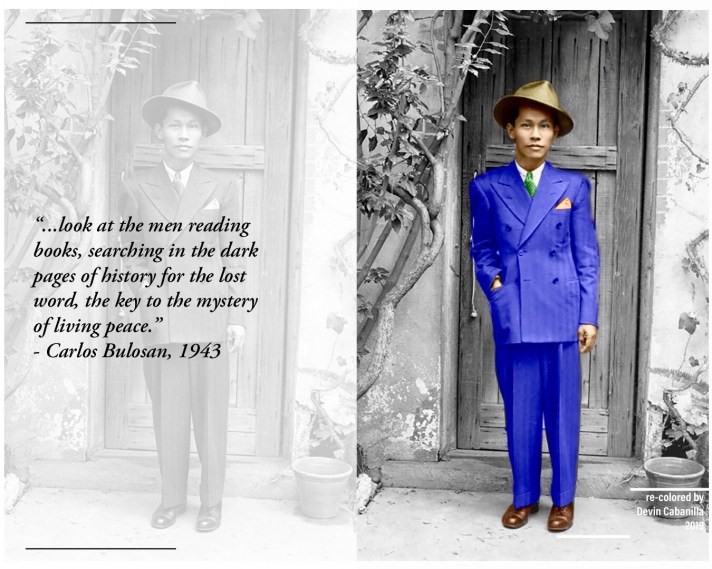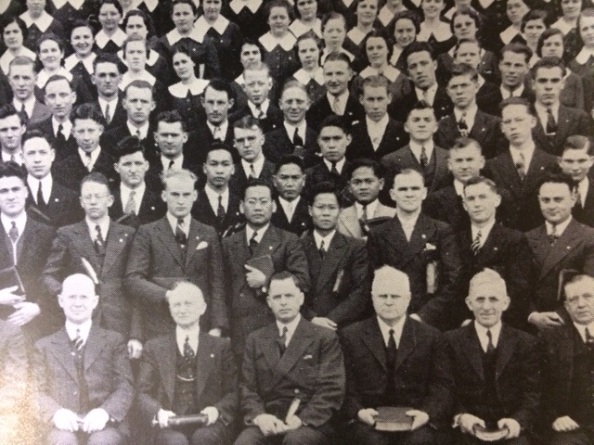
Today, March 8th, is International Women’s Day!
 We are giving a highlight to Carmel Laurino who is the founder of the Kalsada Coffee Company. Their beans are grown in the Philippines and roasted in Seattle.
We are giving a highlight to Carmel Laurino who is the founder of the Kalsada Coffee Company. Their beans are grown in the Philippines and roasted in Seattle.
Carmel is truly an international woman, and leads a team composed primarily of women across two global hemispheres. She is also a former FANHS archive researcher who worked with Fred & Dorothy Cordova. It is because of a Filipino American historical reference that Kalsada was conceived.
1. What is Kalsada and what role do you play in it?
Kalsada Coffee Company is a social corporation working to bring to the international market Philippine coffee. We work closely with our producer partners in quality building initiatives so that they may reach specialty quality standards. As the founder, I wear many hats, currently I live in the Philippines and handle the operations and manage the Philippine based team.
2. How is Filipino coffee distinct from other varieties? What are your beans?
 The coffees we’re sourcing from the Philippines are different varietals of arabica coffee from upland communities of the Cordillera region. Since we’re in the Asia Pacific Region, most would assume the flavor profiles would be similar to Indonesian or Vietnamese coffees but the Philippines has surprised us! We’re finding flavor notes that are normally associated with African coffees – floral and citrusy, but also nutty and chocolate-y notes that you would find in South American coffee. We continue to strive and work closely on the farm level to uncover other flavor notes and continue to define and redefine the Philippine coffee profile.
The coffees we’re sourcing from the Philippines are different varietals of arabica coffee from upland communities of the Cordillera region. Since we’re in the Asia Pacific Region, most would assume the flavor profiles would be similar to Indonesian or Vietnamese coffees but the Philippines has surprised us! We’re finding flavor notes that are normally associated with African coffees – floral and citrusy, but also nutty and chocolate-y notes that you would find in South American coffee. We continue to strive and work closely on the farm level to uncover other flavor notes and continue to define and redefine the Philippine coffee profile.
3. What was your experience at FANHS and how did it shape you?
I remember spending some time as an undergraduate at the University of Washington visiting and doing archival research at FANHS. I enjoyed listening to the stories of Auntie Dorothy and Uncle Fred. Their passion for storytelling and documenting the Filipino American experiences was inspiring and is part of my journey in starting Kalsada. I was doing research on the presence of Filipinos in the Pacific Northwest at the turn of the century, the pensionados and part of that research was at FANHS.
4. What is the historical significance of Filipino coffee?
 The Philippines was once one of the major coffee exporters in the 1800s and was once sold in Pike Place Market before Starbucks even set up shop. There’s a distinct photo of the Filipino Coffee Company taken in 1909 that inspired my journey and was the initial spark in my curiosity in exploring what happened to this industry and what it would take to bring it back to Seattle.
The Philippines was once one of the major coffee exporters in the 1800s and was once sold in Pike Place Market before Starbucks even set up shop. There’s a distinct photo of the Filipino Coffee Company taken in 1909 that inspired my journey and was the initial spark in my curiosity in exploring what happened to this industry and what it would take to bring it back to Seattle.
5. How is your enterprise influencing the Filipino and American business circles?
We began exporting and roasting our product late last year and we’re slowly gaining traction in the US and our initial supporters have been Filipino American business owners. I believe there is a desire to support brands that connect back to our shared heritage and build meaningful and sustainable impact in our global community. This connection through great tasting coffee (perhaps I’m biased) seemed only natural and we hope to continue to build our relationships with local and national businesses so that we may be able to support more coffee growers in the Philippines.
For more amazing stories on the experience of Kalsada’s social enterprise please visit their page. https://kalsada.com/stories/
#IWD2016 #INTERNATIONALWOMENSDAY



 We are giving a highlight to Carmel Laurino who is the founder of the
We are giving a highlight to Carmel Laurino who is the founder of the  The coffees we’re sourcing from the Philippines are different varietals of arabica coffee from upland communities of the Cordillera region. Since we’re in the Asia Pacific Region, most would assume the flavor profiles would be similar to Indonesian or Vietnamese coffees but the Philippines has surprised us! We’re finding flavor notes that are normally associated with African coffees – floral and citrusy, but also nutty and chocolate-y notes that you would find in South American coffee. We continue to strive and work closely on the farm level to uncover other flavor notes and continue to define and redefine the Philippine coffee profile.
The coffees we’re sourcing from the Philippines are different varietals of arabica coffee from upland communities of the Cordillera region. Since we’re in the Asia Pacific Region, most would assume the flavor profiles would be similar to Indonesian or Vietnamese coffees but the Philippines has surprised us! We’re finding flavor notes that are normally associated with African coffees – floral and citrusy, but also nutty and chocolate-y notes that you would find in South American coffee. We continue to strive and work closely on the farm level to uncover other flavor notes and continue to define and redefine the Philippine coffee profile. The Philippines was once one of the major coffee exporters in the 1800s and was once sold in Pike Place Market before Starbucks even set up shop.
The Philippines was once one of the major coffee exporters in the 1800s and was once sold in Pike Place Market before Starbucks even set up shop. 





